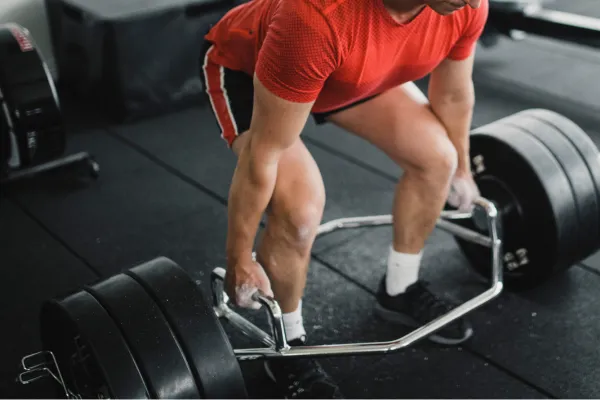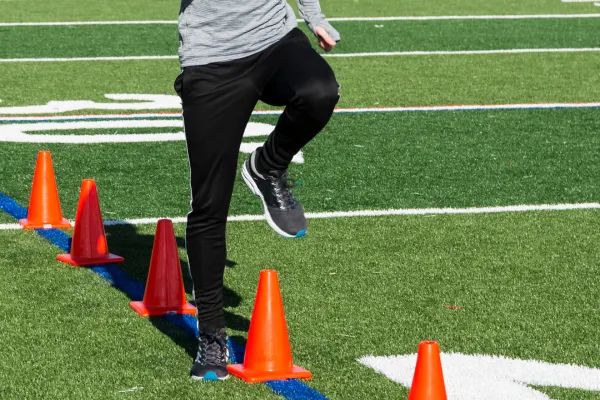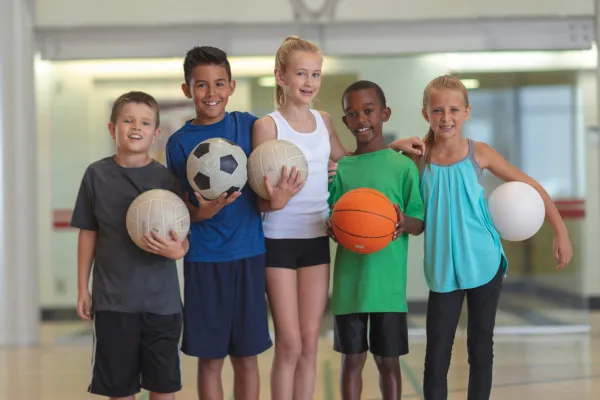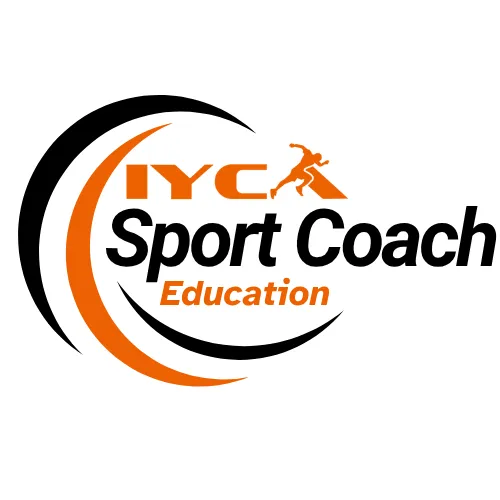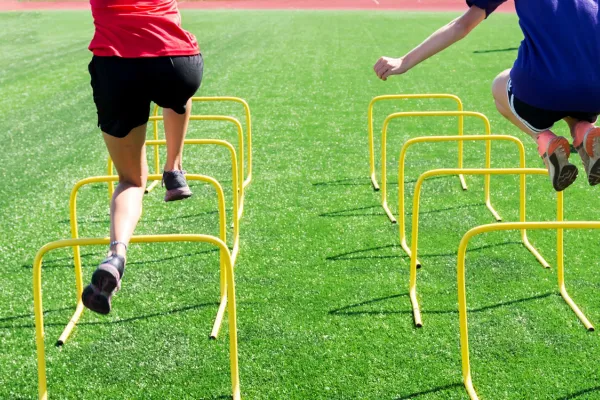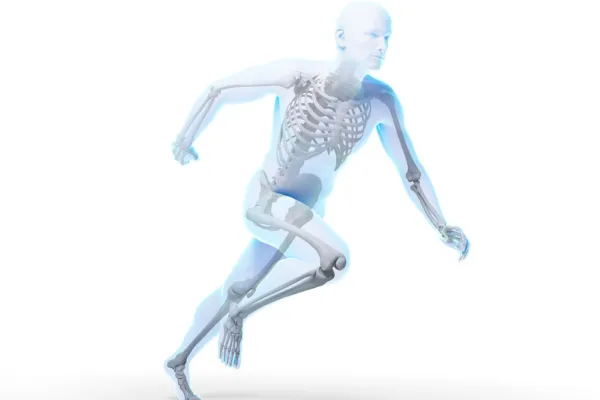
Normal Growth Patterns for Youth Athletes| Alan Smith
Unique Characteristics of Children and Youth
Growth + Development Trends
To create an educational experience for students that is challenging and fun, it is important to create skills and drills that are age and ability appropriate. Having an understanding of growth and development milestones is essential for making appropriate choices for student activities.
How can we Classify Children and Youth?
There are 3 possible ways to classify children and youth to best determine appropriate activities.
1. Chronological Age – based on actual birth date, how old is the student. This classification is easily linked to grade level, helping teachers choose activities that are best for Junior Elementary, Intermediate Elementary or Secondary school aged students.
2. Developmental Age – children and youth grow and develop at different rates. It is valuable to identify students among their peers by their rate of maturation. Is the student an Early, Average or Late in their rate of Maturation? During puberty the height and size differences at the same grade level can be significant.
3. Training Age – consider each student in relation to their sport and activity level to determine their experience in sport skill development along with physical skill development. This helps Teachers and Teacher Coaches choose skills and drills that are Beginner – Intermediate – Advanced based on training experience.
By reviewing each student from all of these perspectives, the ASAC Sports Performance Trainer / Teacher / Coach can develop a better understanding of age and ability appropriate skills and drills.
Growth Patterns
The charts on each video (below) is a visual representation of normal growth rate data and growth patterns for children and youth. The chart shows the growth rate for 3 major systems in the body: neurological, skeletal and muscular to provide a general understanding of the physical changes experienced by school aged children and youth as they mature.
The growth rate data shown are average rates and reflect an average for boys and girls. If actual data was plotted for girls, the physical changes could happen 1 to 2 yrs earlier than for boys based on the timing of the onset of puberty. When maturation rates (early – average – late) are considered, it is very apparent that growth and development rates are very individualized.
Growth Trends:
On first observation, it is important to look for growth trends for each of these major systems related to physical development of children and youth. It is important to note:
• The neurological system develops at a very fast rate (birth to 6 yrs) with almost complete development by age 10 yrs.
• The skeletal system shows one early growth spike (2-4yrs), stabilizes and then skeletal growth spikes again with a plateau of bone growth at age 15 or 16 yrs.
• The muscular system shows small, steady changes until age 14 yrs. where a significant growth spike is observed until age 20.
These general trends and patterns in growth must be considered when training children and youth. During maturation there are specific windows of opportunity where age appropriate training experiences can to impact activity and sport success as well as create an environment for safety with age.
Conditioning Guidelines and Recommendations based on Growth Rates:
1. Nervous System
The development of the brain and the nervous system begins at conception.
Peak development of this system occurs between ages 0 to 6 yrs where the brain develops, neural connections between the brain and muscle are created and reinforced developing the communication pathways for motor control.
Children learn gross motor patterns like crawling, walking, running, jumping, skipping, throwing, catching.
Noting the rate of change within this system, there is a great opportunity to impact balance, coordination, body awareness and movement fundamentals before age 10 yrs.
At an early age it is recommended that young children are exposed to a variety of movement patterns and balance challenges to stimulate enhanced neurological growth along with the development of strong movement abilities. These fundamental gross motor skills are the foundation of all major sport and recreation skill and drive Physical Literacy.
2. Skeletal System
The skeletal system shows progressive change with age, but we observe 2 major spikes of height change at birth to 4 yrs. and again from 12 to 16 yrs.
As bones grow in length children and youth may lose their body awareness and can become awkward and uncoordinated (this may have a significant effect on their self esteem as well).
The long bones (legs and arms) experience considerable growth and can create that baby giraffe look.
During times of peak height change, students really benefit from movement fundamentals and balance challenges to help them learn to move their body with greater coordination as height changes.
It is important to acknowledge that with longer levers also comes the ability to generate greater force without relative force control from larger and stronger muscles and connective tissue. Students are very injury prone during this stage of rapid height change.
As bones grow, muscles are not getting significantly larger at this time. This can make a student feel like they are on a “stretch rack” making muscles tight and very prone to damage, especially during the puberty growth spike.
During this stage the recommendation is to train skills and drills that focus on body control, braking strategies and maintaining range of motion to keep students injury free and coordinated during rapid changes in height.
3. Muscular System
The last system to experience major change is the muscular system which shows a relatively flat growth rate until age 14 yrs. when growth spikes.
The onset of puberty triggers muscle development (more in boys than girls, but muscle development happens in both sexes) with the release of testosterone.
Many coaches encourage young male athletes to build some muscle size, but the availability of circulating hormones can limit the ability to build muscle until about age 17 years.
The biggest benefits for strength training come in puberty, but athletes (both male and female) can build muscular strength without a significant amount of circulating hormones by using Integrated Strength training strategies.
Athletes develop strong mind to muscle connections (the brain activating the muscle to contract and relax) through repetition of sport specific skills and through the accurate repetition of fundamental movement patterns.
When muscle is activated through skills, drills and sport experiences it stimulates strength increases and these actions improve bone density as well as joint integrity making an athlete less susceptible to injury. (simply look at a young athlete in early puberty and you will see some degree of muscle development).
Developing the mind to muscle connections provides a strong foundation for muscular strength and hypertrophy (increase muscle size) improvements when the hormones are released in late stage puberty giving these athletes an edge over the competition for muscle development.
During peak muscular change the recommendation is to continue to challenge movement patterns and balance to maintain coordination and body awareness.
Summary
This blog explores how growth and development trends shape the way children and youth should be trained, coached, and educated in sports and physical activity. It emphasizes that to create safe, fun, and challenging learning environments, skills and drills must be matched to each student’s chronological age, developmental age, and training age.
Understanding growth patterns is key. The neurological system develops rapidly in early childhood, making ages 0–10 critical for building coordination, balance, and fundamental movement skills. The skeletal system experiences two major growth spikes, often leading to awkward movement and increased injury risk during puberty. The muscular system develops more slowly, with the most significant changes occurring in adolescence when hormones drive muscle growth.
Each stage of growth presents “windows of opportunity” where targeted training can maximize athletic development and support physical literacy. Coaches and teachers should adapt conditioning strategies accordingly.
By respecting the unique characteristics of children and youth, educators and coaches can foster both athletic success and long-term enjoyment of physical activity.
If you want practical guidance to coach with confidence, check out Built To Coach for strategies every coach can use.

Alan Smith
Fitness Professional | Educator | Author
Alan knows what it’s like to feel unprepared, underqualified, or unsure in front of a team. For nearly three decade, he’s worked with everyone from exercise science students to parent-coaches, helping them keep athletes safe, strong, and confident.
A coach’s coach, Alan teaches that you don’t need to know everything—you just need a clear path, the right tools, and someone who gets it. He specializes in helping young coaches, volunteers, and educators build systems they can trust, lead with intention, and make a lasting impact on athletes’ lives.
“You don’t have to be perfect to be impactful. You just need to be prepared, intentional, and heart-led.”
Author of Build To Coach
If this blog sparked reflection or affirmed your mission—don’t stop here.
Get certified with the International Youth Coaching Association (IYCA) and gain the tools, science, and strategies to confidently support long-term athlete development.
Whether you’re working with beginners or elite youth athletes, IYCA certifications are designed to elevate your impact.
Learn more and get certified today:
Certifications
Certified Athletic Development Specialists (CADS)
Certified Speed & Agility Specialist (CSAS)
Youth Nutrition Specialist (YNS)
Youth Athletic Assessment Specialist (YAAS)
High School Strength & Conditioning Specialist (HSSCS)
Because the best coaches never stop learning, and the athletes you serve deserve your best.


